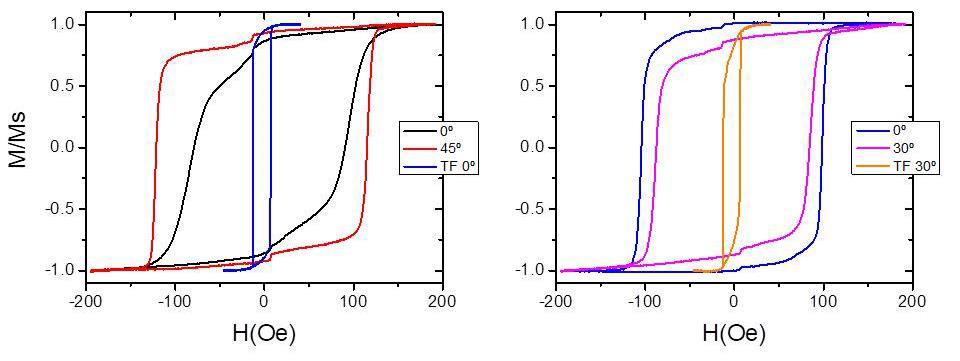“Nanopatterned hard/soft bilayer magnetic antidot arrays with long-range periodicity”
Andreas Kaidatzis, Rafael P. del Real, Raquel Alvaro, Dimitrios Niarchos, Manuel Vázquez, José Miguel García-Martín
J. Magn. Magn. Mater., 2019, 166142
DOI: https://doi.org/10.1016/j.jmmm.2019.166142
A top-down approach using focused ion beam has been employed to fabricate Co/Permalloy hard-soft bilayer magnetic antidot arrays. These nanopatterned films are studied with particular emphasis on magnetic coercivity. The antidots have a diameter of 40 nm and the studied antidot symmetries are square and hexagonal. A dependence of magnetic coercivity on the relative thicknesses of the magnetically hard (Co) and soft (Permalloy) layers is found; increasing Permalloy thickness results in lower magnetic coercivity. Furthermore, the long-range periodicity of top-down nanopatterned antidots results in higher magnetic coercivity and a stronger magnetic domain-wall pinning, compared to identical hard/soft bilayers of short-range order deposited on porous anodic alumina. The combination of antidot symmetry and hard/soft thickness, allow for efficient tailoring of the magnetic properties of nanopatterned thin films. Finally, magnetic force microscopy imaging of the antidot array magnetic configuration shows striking qualitative differences between the two array symmetries: square symmetry arrays have inhomogeneous magnetic state and a high density of immobile super-domain walls, whereas hexagonal symmetry arrays show a homogeneous magnetic configuration.

We show in the figure a representative MOKE hysteresis loops of antidot arrays. Square (left) and hexagonal (right) symmetries of the Co/Py-thin bilayer; the lattice constant is 240 nm; first and second neighbor directions, denoted by the angles, are shown: 0º and 45º, respectively, for the square array, and 0º and 30º, respectively, for the hexagonal array
This paper derives from a previous international collaboration funded by CSIC (Ref. i-LINK0783). This study has been supported by the Comunidad de Madrid under projects S2018/NMT-4291 TEC2SPACE and S2018/NMT-4321 NANOMAGCOST, and the Spanish MINECO under projects CSIC13-4E-1794 and MAT2016-76824-C3-1-R.
